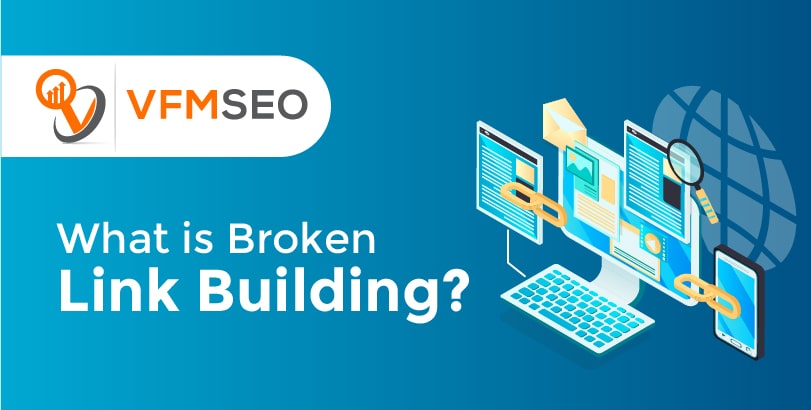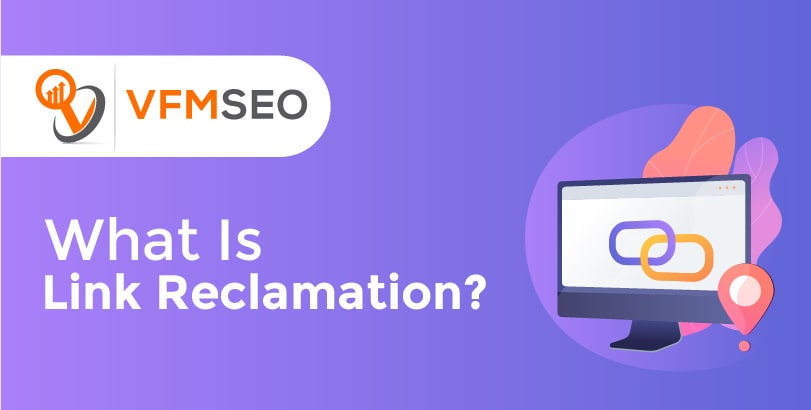
Broken Link Building: Important Things to Get Links
Broken link building is an effective off-page SEO strategy because it benefits both marketers and publishers. When a broken link is replaced with an updated URL, a marketer earns a link back to their website, and a publisher’s site becomes more user- and SEO-friendly.

What is Broken Link Building?
Broken link building is the process of finding dead outbound links on a website, notifying the publisher about the broken link, and providing them with a replacement link that leads back to your site.
Broken backlinks can happen for a few reasons:
- The linked content has been removed
- The page URL of the linked content was changed
- The domain of the linked content was changed
Broken link building is practical and strategic because it benefits both publishers and marketers.
Publishers don’t want broken outbound links on their site because:
- It provides a bad experience for users. Users click on a link and expect to find a valuable resource. Instead, they are met with a 404 page or error message.
- It can negatively affect SEO. Search crawlers use links to understand the relevance and authority of a piece of content. When a link is broken, it fails to provide additional context to the linking page, negatively influencing its long-term SEO results.
Marketers benefit when publishers update a broken link with a new link to their site.
The number of high-quality backlinks a website has is an essential part of off-page SEO because it suggests that the content is valuable and authoritative to search engines. As a result, backlinks are imperative signals that help improve a site’s ranking on search engine results pages (SERPs).
So when a marketer reaches out to a publisher, informs them about a broken link, and provides a new resource, both sides win. The publisher adds the new link, fixing their on-site error while providing a valuable backlink to the marketer.

What Is Link Reclamation?
It’s worth noting that broken link building is similar to link reclamation, but it is not the same.
Link reclamation is the process of earning back the links that used to lead to your content. In this case, a website linked to your content at one time, but for whatever reason, they took down or broke the link.
Link reclamation is a form of broken link building. However, not all broken link building is link reclamation, as link reclamation implies that the broken or deleted links belonged to your brand in the first place.

How to Set Up a Broken Link Building Strategy
Now that you know what broken link building is and why it is an effective off-page SEO technique let’s look at how you can develop this strategy for your brand.
There are three core components of broken link building:
- Find broken backlinks. Identify sites that fit two criteria: the site has a broken link, and the site is one that you would like to link back to yours.
- Create replacement content. Develop or repurpose content that matches the linked source. The content needs to be a natural and relevant replacement for the linked information.
- Reach out to the publishers. Please find the best contact at the publication and reach out to them to propose your replacement content.
How to Find Broken Backlinks
There are two parts to this step of broken link building. First, you must know how to find and qualify sites that may have valuable backlink opportunities. Second, you should also know how to check for broken links on the sites you find.
Where to Look for Broken Backlinks
There are broken links all across the internet. But instead of trying to get as many links as you can, it’s better to focus your efforts on getting the suitable types of backlinks–those that will be most valuable to your marketing plan.
The best-broken backlinks worth pursuing are:
- On sites that your audience regularly visits
- On sites that link to your competitors
- On high-authority websites
Let’s review some tips for finding broken links that meet one or more of these points.
How to find competitor backlinks
Staying competitive with others in your industry requires knowing where competitor sites have earned links and earning links on the same sites. When you know the sites that link to your competitors, you can add them to your broken link-building research and overall link-building strategy.
To find competitor backlinks, use Alexa’s Competitor Backlink Checker. Enter up to 10 of your competitors (or use the list you saved using the Audience Overlap Tool), and run the analysis.
The report shows the top sites linking to your competitors and the exact URLs that point to competitor sites. This competitor backlink analysis helps you create a list of sites to target in your broken link-building efforts. Start by checking backlinks on these sites and see if they have any opportunities for you to replace a broken link.
How to find high-authority websites
Before you start broken link building using sites you find, check to see if the link is worth it. A link on a site with high authority will provide more SEO value than a link on a site with low online authority. So check each site’s authority before creating a link-building strategy for it.
To understand a website’s authority, check its Alexa Rank. Alexa Rank is a measure of a website’s popularity relative to other sites on the web. Sites with a high Alexa Rank (ex. 100,000) have less authority than sites with a low Alexa Rank (ex. 100). The site with an Alexa Rank of one is the most authoritative site online.
You can view a site’s Alexa Rank using the Site Overview Tool. Enter the site URL to see its Global Rank as well as its ranking in the United States.
You can also check a site’s Alexa Rank while using Alexa’s Competitive Backlink Checker. The report includes each site’s rank, allowing you to identify sites worth targeting in your broken link-building strategy quickly.
How to Check for Broken Backlinks
Once you identify sites that would be good places to build links, use a broken link checker to see if there are any dead links on each site.
To find broken backlinks, there are a variety of broken link checkers to use.
- Dr. Link Check: Enter a website URL to produce a report on broken links across the entire website.
- Dead Link Checker: Enter multiple website URLs at one time to scan and identify broken links on many sites at once.
- Atomseo: Scan any website and search for broken links or use the Atomseo Chrome Extension to add a broken link checker to your browser. The extension highlights broken links as you browse the web, making it easy to identify broken link opportunities.
How to Create Replacement Content for Broken BacklinksTo get publishers to replace a broken link on their site with a link back to your content, you must have a valuable resource to link to. To create high-value replacement content that will lead to a link, use the following tips.
Create relevant content. Publishers will not link back to your site unless the page you direct them to is an appropriate resource. Make sure the content you want the publisher to link to provides value to their readers and gives them the additional information they were looking for.
Review the content on the old link. If it’s difficult to tell what the original broken link led to, attempt to view the old content. Enter the broken link into the Wayback Machine, which saves screenshots of old web pages and posts. By seeing the old linked page, you can more accurately match your content to the content of the original link.
Link to internal pages on your site (instead of your homepage). Sites typically add outbound links on their site to provide additional information or cite sources. These pages are usually not homepages; they are internal landing pages or blog posts. To help increase the chances of getting a link back, offer an internal page as a replacement link. An exception to this best practice is if a page includes a list of company or brand homepages with links to each. If the link to one of your competitors is broken, you may be able to get a link back to your homepage instead.
Create valuable content. Linking to low-quality content can decrease a site’s online authority and SEO. So publishers will be far more likely to link back to your content if the quality is very high. Don’t quickly throw together a short, low-quality blog post for your replacement link content. Use this checklist for writing to create content that will impress publishers while also serving as solid SEO content for your site.

